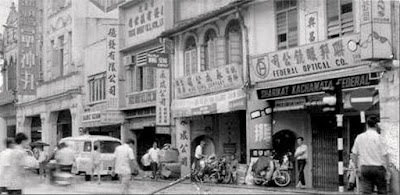Technical Information
Theme: Conferment of Kuala Lumpur as status of city
Mintage: 500 pcs
Material: Copper Nickel
Weight: 16.5 g
Diameter: 33.30 mm
Thickness: 2.55 mm
Background of Kuala Lumpur City
From a small town Kuala Lumpur has grown to become the nation’s Capital City and the biggest city in Malaysia. Kuala Lumpur City has become the centre for many socio-economic various activities including business, finance, administration, education, religion, culture and sports.
Since 1961, Kuala Lumpur has been governed by one single corporate entity that was then known as the office of the Federal Capital Commissioner. On the 1st February 1972, Kuala Lumpur was officially conferred the status of a city. With this, the Federal Capital Commissioner became the Mayor of KL. Tan Sri Dato’ Lokman Yusof the former Federal Capital Commissioner was elected as the first Mayor of Kuala Lumpur. When he passed away on 15.5.1972, he was succeeded by Tan Sri Yaakob Latiff who served for a period of 10 years. The third Mayor of KL was Tan Sri Dato’ Elyas Omar who took office on 1.2.1981.
The fourth Mayor was Dato’ Dr Mazlan Ahmad whose appointment was on 17.11.1992. Tan Sri Dato’ Kamarruzaman Shariff then took over as the fifth Mayor and served between 14.12.1995 and 13.12.2001. He was then replaced by Y Bhg Kol. Datuk Hj Mohmad Shaid b Mohd Taufek whose appointment was on 14.12.2001. Then from 14.12.2004 until 13.12.2006 the post of the seventh Mayor was held by Y Bhg Dato’ Hj Ruslin bin Hj Hasan. The office of the eight Mayor was held by Y Bhg Dato’ Ab Hakim bin Borhan. He was then replaced by Y Bhg Tan Sri Ahmad Fuad bin Ismail whose appointment was on 14.12.2008. The current and tenth Mayor of the city is Y Bhg Datuk Seri Hj. Ahmad Phesal bin Hj. Talib who has been in office since 18.7.2012.
 |
| Figure 1: Jalan H.S.Lee, Kuala Lumpur in 1960 |
In general, I have faith in most of numismatic collectors do agree that this coin is really tough to hunt for especially those pieces which are still well preserved until nowadays. According to the unofficial information inherited from the senior collectors, most of the limited commemorative proof coins were not opened for public subscription in 1970s, they were always used to be a souvenir gift for the VIPs in that time such as Malaysia Parliament Proof Set 1967, Bank Negara Anniversary 1969 and Tunku Abdul Rahman 1971.
I started the treasure hunt for this coin since 2008 and used to hold several pieces on palm view before, the inferior conditions always made me disappointed until I managed to hunt a piece (as above) 3 years after in 2011. Most of them were exposed to serious tarnishing, hairlines or damages. As we all know the moist climate and low awareness about coin preservation are the main tricky issues in local numismatic landscapes especially the numismatic items issued in 1960s -1970s. They are unlikely the international coinages collection theme such as Straits, Malaya, Sarawak or British Borneo in which you may able to find a piece of good condition from foreign countries. This coin has experienced a long-term of undervaluation, it may also a reason why it was not well preserved and proper kept by the old collectors.
The population report of established grading companies may provide us some guidance about rarity and high condition variance of this coin.
Numis Galleries House
29 May 2015










